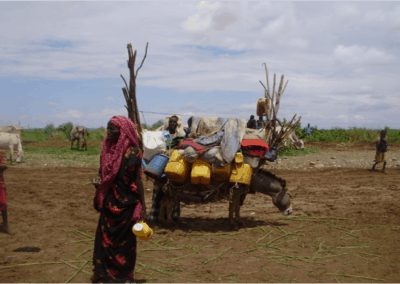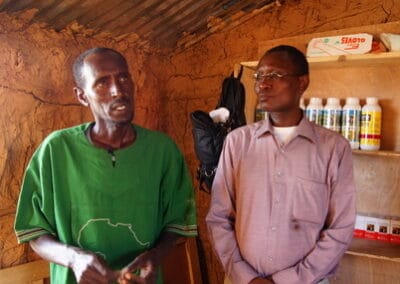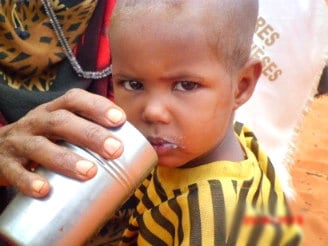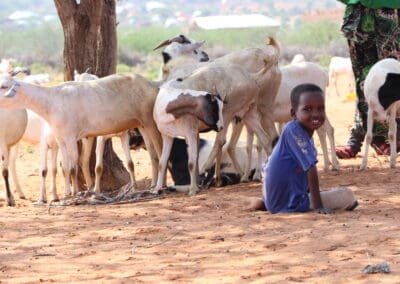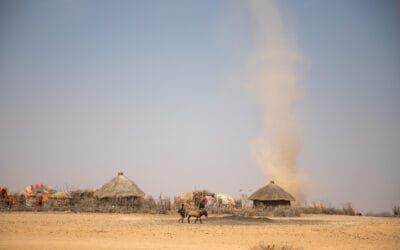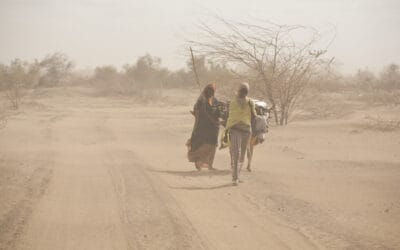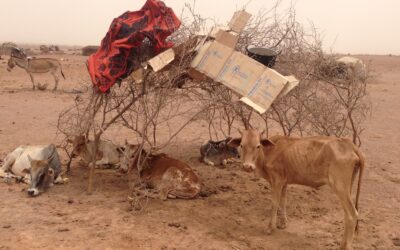Improve Food Security through Nutrition Based Livestock Off-take (Project HRF)
Project Overview
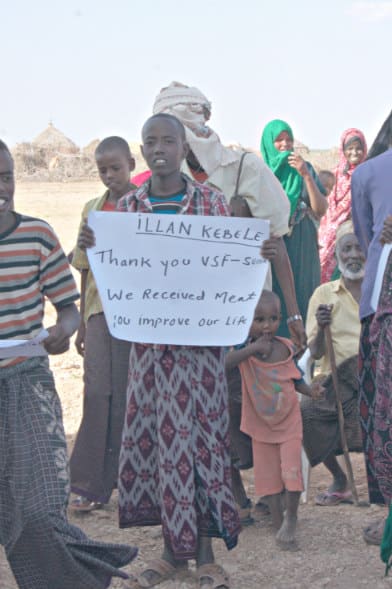
Country
Ethiopia
Project name
Project status
Completed
Duration of the project
| Start: | 23.01.2012 |
| End: | 23.01.2013 |
| 12 months |
Budget
Donors
UN OCHA
Project area
Topics
Tags
Background
The Somali region is the eastern-most of the nine ethnic divisions of Ethiopia, where pastoralism is the most prevalent means of livelihood. The lives of the community in the target area are therefore highly associated with livestock and livestock products. Especially camels have a key place in the lives of the people in these communities. Meat, especially camels’ meat, is the food that the indigenous community knows how to cook, how to manage, how to categorize, and even how to preserve for a long time. Furthermore, camel meat is not only considered as food but the local population also ascribes healing properties to it. The slaughtering and distribution of camel meat as introduced by the project interventions had therefore a significant relevance in terms of culture.
The food security situation in most parts of southern Somali region is unstable due to the impact of prolonged droughts which began with the failure of two consecutive rains. In pastoral and agro-pastoral areas of this region, the situation has severely worsened as the primary source of livelihoods, i.e. income from livestock and milk production, has deteriorated. Drought has not only led to emaciated physical conditions of livestock but also increased the number of livestock deaths. Stable food prices have increased sharply due to the shortage of supplies of market and the impact of national and global markets. Conversely livestock prices are decreasing due to excessive supply and poor physical conditions of the animals. 76.3% of the respondents to the baseline survey mentioned they will run out of food within the next four weeks unless they received external help. Further, 65.7% of the households consumed less than the recommended diversified diet of four or more food groups a day, and only 27% of the households mentioned having consumed one type of animal protein within the preceeding 24 hours of the survey (mainly milk and milk products, almost no meat).
The project addressed on the one hand the immediate need of the community by supplementing meat and thereby stabilizing their nutrition. On the other hand it addressed the local economy by injecting cash to the community through facilitating market access through livestock sale.
Project:
Camel meat was distributed to the local population of two target areas for three months in order to diversify their daily diet. During this period, each family obtained 5 kg of meat per week, which allowed them to add animal protein to every meal. Not only allowed these additional rations of meat the beneficiaries to get out of malnutrition but it also had an important effect on the productiveness of the whole community. People who were weak from the lack of food and couldn’t do anything but wait for food aid suddenly recovered energies which allowed them to become economically productive again. Especially the members of the women group benefited from the project’s activities. During the project intervention the demand on camel meat rose and as the local population were responsible of the slaughtering and the distribution of the camel meat they could directly benefit from the project. Moreover, five additional camels were slaughtered and sold on the local market every week, which allowed the women to earn some extra money.
Throughout the whole intervention period in the Somali region, VSF-Suisse undertook an impact study to provide key background information and to track the progress and outcome of the project implementation at all different stages. The results show that this kind of emergency aid has had several beneficial effects, even some unintended ones: the health of pregnant women and breastfeeding mothers improved significantly during the intervention period. Informants stated that even women suffering from ‘Dig-lahan’ (anaemia) revived thanks to the additional proteins. In some other cases, women’s menstruation returned and fertility was enhanced for both men and women.
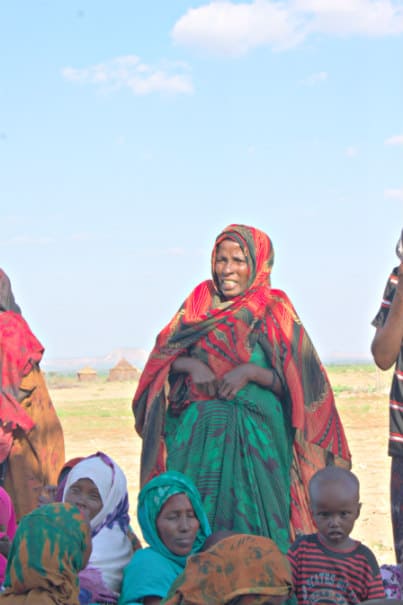
Further projects in the country
Active projects:
No Results Found
The page you requested could not be found. Try refining your search, or use the navigation above to locate the post.
Finished Projects:
.
Update: Drought and food crisis in the Horn of Africa
Picture: Somali region, Ethiopia © FAO/Michael Tewelde The food crisis in the Horn of Africa has been worsening despite major humanitarian efforts and the latest forecasts for the coming months are worrying. The ongoing drought, rising food prices, lack of...
Severe drought in the Horn of Africa intensifies
Following drought disasters in 2011 and 2016-2019, the countries of Somalia, Kenya and Ethiopia in the Horn of Africa are once again in a precarious situation. The dire effects of the current drought on the region's people and animals are compounded by additional...
Drought in Dawa zone in Ethiopia claims 47,000 animal lives, food insecurity increases
The Dawa zone in Ethiopia has been struggling with severe drought for more than a year. The local administration and government, together with their humanitarian partners, including VSF-Suisse, analyzed the situation at the end of October. The report, which you can...

